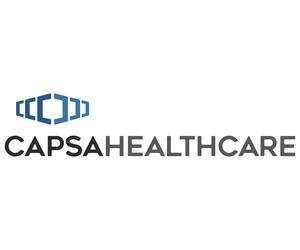HEALTHTECH: How are mobile workstations evolving to serve specific medical specialties?
TORBETT: A fast-growing area, and this is really amplified by the COVID-19 response, is telemedicine carts with advanced video and communications technology. They often include dual monitors and support to plug in specialized scopes to look at a patient's throat, or to look in their ears, at their skin or in their eyes.
Common specialty models include fetal monitoring carts. We have carts for phlebotomists; they draw blood and take samples back to the lab. There are registration carts designed to hold document scanners, label printers, signature pads and basically all the information you have to supply when you’re being admitted to the hospital.
We also see growth in training carts. Those usually have dual displays and a monitor mount where one of the monitors can spin around so the class can watch on one side while the instructor is typing.
HEALTHTECH: How have capabilities and computing power changed?
TORBETT: Battery technology keeps evolving rapidly. The newest lithium batteries are nowhere near the pain point users remember from five or 10 years ago. Old models used sealed lead-acid batteries, basically like a car battery, and those did not work very well.
In addition, there’s an increasing number of lightweight LED monitors and tablets being used instead of heavier devices. Early on, there were a lot more issues with wireless coverage and strength of signal but that’s gone by the wayside. Facilities now have more access points and better connectivity.
HEALTHTECH: What are the greatest challenges of fleet management?
TORBETT: IT teams have a lot of difficulties managing a fleet that’s spread out across their facilities. Many hospitals have to manage carts at remote locations that don't even have tech support onsite. Meeting those challenges requires remote fleet management software.
This software gives users the data to make smarter decisions, to be proactive and prevent issues from growing to the point where the only answer is to just keep buying more carts — which means more costs, more devices to manage, and user frustration with carts out of service.
READ MORE: Technology helps providers go the distance to bring care to rural patients.
HEALTHTECH: How has user feedback shaped these products?
TORBETT: We listen closely to the pains and wishes of clinical users, IT and administrators. It's about asking open-ended questions and the right ways to uncover unmet needs and identify innovative ideas for a solution.
I’ll give you an example: We put a touch screen in our CareLink carts. It’s a 7-inch glass touch screen on the front. We did research with nurses about what belongs in a screen. If you had a screen like that embedded in the cart, what do you wish it did? What do you wish you could use your smartphone for in front of patients?
It led to the development of a number of features, some of which we wouldn't have necessarily even thought of. That was powerful for us.
HEALTHTECH: What trends or changes might affect future models?
TORBETT: I think you’ll see an increasing use of handheld devices. And when I say that, I mean decoupling the computing and the computer from being permanently attached to displays, keyboards, other devices and the storage they're controlling.
There are also trends toward smaller, lighter-duty carts for other devices and basic use cases. A good example of that is a physician-rounding cart. These clinicians are going all around the hospital, after all.
I think you’ll also see a system of devices and carts that work together instead of trying to force a single one-size-fits-all on everybody for all of their tasks.
Brought to you by:











